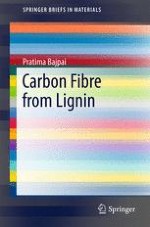This book presents detailed information on the production and properties of carbon fibers derived from lignin precursors. Focusing on future directions in the carbon fiber industry, it also introduces a novel process for obtaining high-purity lignin, a key aspect in the manufacture of high-quality carbon fiber. Carbon fiber is currently the most preferred lightweight manufacturing material and is rapidly becoming the material of choice for manufacturers around the world. Although more than 80% of commercial carbon fiber is estimated to use PAN (polyacrylonitrile) as a precursor, carbon fiber manufactured from PAN is expensive and therefore its application is limited to high-performance structural materials. Lignin is the second most abundant biopolymer in nature after cellulose and offers a carbon-rich, renewable resource. As a byproduct of the pulp and paper industry and the production of cellulosic ethanol, lignin is also available at low cost, making it an economically attractive alternative to PAN for the production of carbon fibers, as highlighted in this book. The information presented will be of interest to all those involved in the investigation of carbon fiber materials, carbon fiber manufacturers and carbon fiber users.
